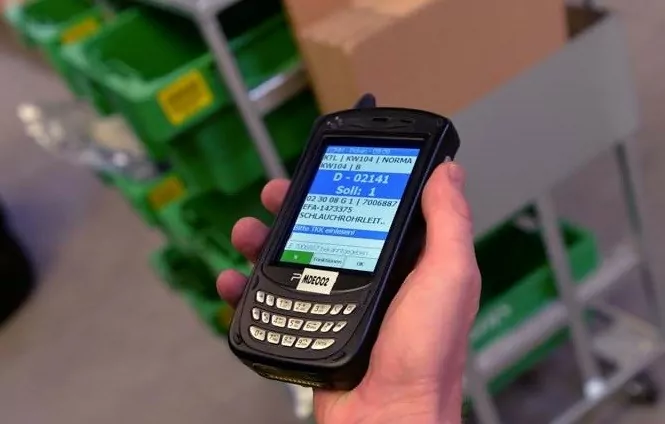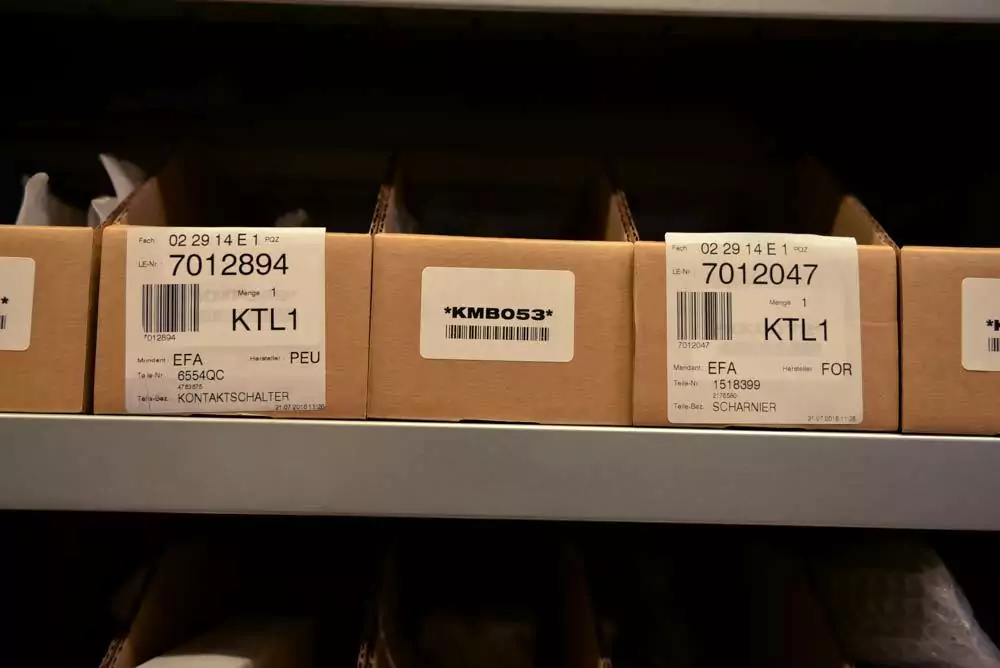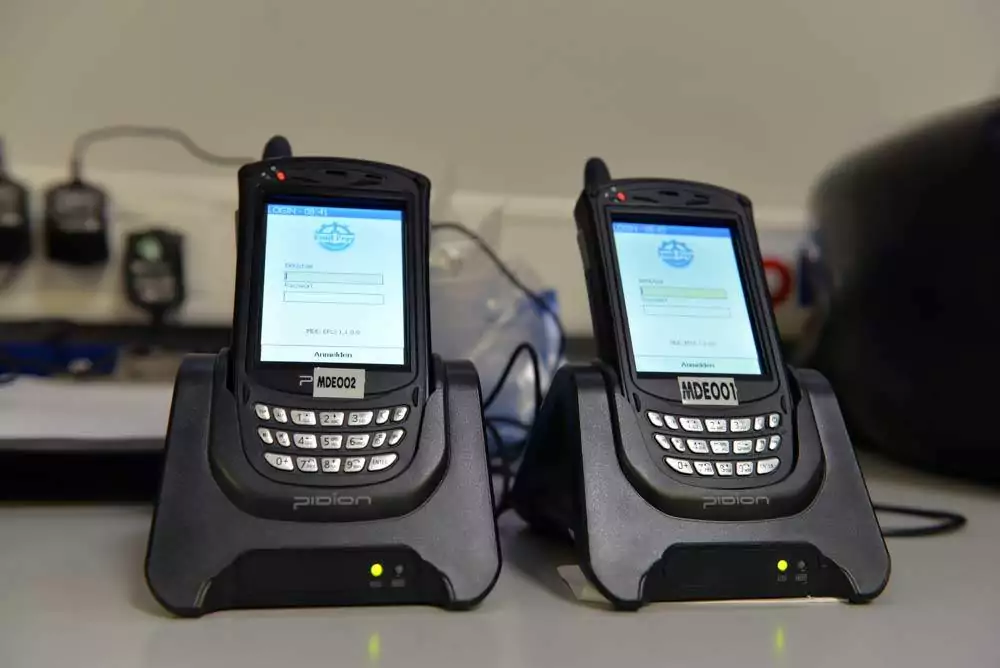The picking method Pick-by-Scan is a paperless picking process that is supported by a portable data collection terminal, PDT for short. The PDT replaces the classic picking list in paper form. Mobile handheld computers with integrated 1D or 2D barcode scanners are used to guide the employee step by step through the individual pick positions.
During the picking round trip, the handheld computers can either be held in the hand or connected to a transport system (e.g. a trolley). . Orders and information on pick positions are provided via the device. The order data can either be stored locally or made available dynamically via a network connection from the warehouse management or ERP system.
If the data is stored locally, the tour and the order data must be transferred to the PDT in advance at a central interface to the order pool. Disadvantage: replenishment requests or inventory corrections are stored on the device and are not transferred to the host or warehouse management system until after the tour is complete. Nowadays, an PDT is usually connected to the local network and, as mentioned above, receives orders directly from the WMS. A PDT in the network can also react flexibly to ongoing developments or can be used to respond to current situations.

Pick-by-Scan in practice
The storage bin and the quantity to be removed are shown on the display integrated in the MDE. Depending on the system configuration, either each removal must be scanned or the system scans once and the total quantity is acknowledged once at order completion. At the item’s storage location, the picker scans the storage location number and item number. In this way, incorrect picking can be avoided.


To avoid errors during removal, target/actual differences are displayed again after each scan of the respective order. When all pick items have been processed, the Warehouse Management System or the ERP system is informed automatically or by manual activation. Packing lists and shipping documents are then automatically printed. The actual stock reconciliation (see Inventory Management) takes place either promptly or at the end of a picking shift.
Advantages of Pick-by-Scan (MDT) over Pick-by-Paper
- Real-time communication via WLAN
- Reduction of unproductive time. Managing, reading and processing printed picking lists is no longer necessary
- Subsequent stock reconciliation is no longer necessary
- Direct feedback minimizes picking errors
- Greater transparency (pick data can be displayed graphically at the control center).
- Systematic guidance during a picking tour
- Eliminating the need for printers and paper
- Use in different storage areas
General disadvantages of Pick-by-Scan (MDT)
- In contrast to Pick-by-Voice or so-called ring scanners, the employee cannot work ‘hands free’ when scanning
- Misreading possible due to dirty or illegible labels/barcodes; the reading process was started but no label could be decoded
- Possibly higher time expenditure by multiple scanning attempts (system dependent)
- Investment costs – up to 2,000 Euro per device (plus additional system and training costs)
Pick-by-scan summary:
Pick-by-scan is used in many distribution centres and has often replaced the picking list in paper form. Since modern MDT devices are equipped with WLAN, a keyboard, a display/touch screen and an integrated scanner, order picking tours can be carried out without paperwork. The picker can directly acknowledge pick positions, transmit missing stock to the system and, if the system configuration allows it, interact with the warehouse management software.
For more information about barcodes, scanning and picking, see Picking – Process Steps and under The Bar Code – EAN, GTIN and GS1 Standard.
Text images: TUP
Also available in Deutsch (German)